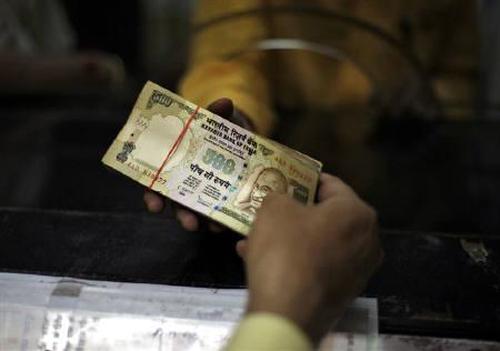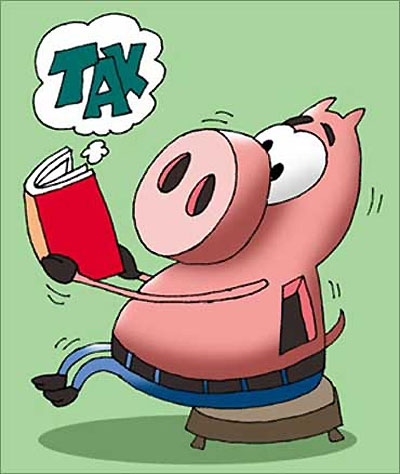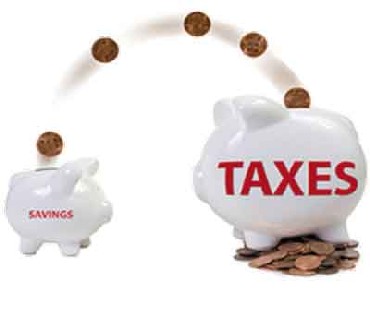Photographs: Reuters
A tax payer should not ignore section 80G of the Income-Tax Act to gain maximum benefits, says Vikram Ramchand.
A tax payer can avail benefit of up to 100 per cent by making contributions to a charitable and research institution. This provision is made under section 80G of the Income-Tax Act.
The benefit of this deduction and consequential tax saving is available to any taxpayer including an individual, an Hindu undivided family (HUF) and a company etc.
It is very crucial for a tax payer to keep these factors in mind while making donations and contributions to avail tax benefits under 80G.
...
3 handy tips to gain maximum tax benefits
Image: While calculating the total income of the tax payer and for arriving at the deductible amount under section 80G, first the aggregate of the amount donated will be computed.Photographs: Reuters
Realty check
Always remember to check whether the recipient of the charity has valid 80G approval.
The donor should definitely take the receipt of the donation made in cash or cheque.
In case the donor wishes to donate any specific article, he is required to give the exact amount by which the organisation representative can buy the essentials for which the donation was given.
One can donate more than once a year.
The aggregate of the donations made during the year is referred to as the ‘gross qualifying amount.’
...
3 handy tips to gain maximum tax benefits
Image: Always remember to check whether the recipient of the charity has valid 80G approval.Photographs: Reuters
Do your calculation
The second step is to determine the ‘net qualifying amount,’ which is limited to 10 per cent of the ‘adjusted gross total income’ of the taxpayer.
‘Adjusted gross total income’ for this purpose is the gross total income, as reduced by deductions under sections 80C to 80U (excluding Section 80G), any income on which income-tax is not payable, long term or short term capital gains taxable at flat rates under Section 112 or Section 111A and special incomes of non-residents liable to tax under Sections 115A to 115D.
However, the aforesaid ceiling does not apply in respect of donations made to certain specified funds, such as National Defence Fund, Prime Minister’s National Relief Fund, Central Welfare Fund of the Army, Air Force and Navy, Chief Minister’s Relief Fund, etc.
Click on NEXT for more...
3 handy tips to gain maximum tax benefits
Image: The aggregate of the donations made by a tax paeyr during the year is referred to as the 'gross qualifying amount.'Know your facts well
The third step is to actually work out the deduction on the basis of the net qualifying amount.
The general rate of deduction under section 80G in respect of donation made to normal funds and institutions is 50 per cent of the net qualifying amount.
However, in case of donations made to certain specified funds such as National Defence Fund, Prime Minister’s National Relief Fund, Chief Minister’s Relief Fund, Central Welfare Fund of the Army, Air Force and Navy, etc., special deduction (100 per cent) of the net qualifying amount is available.
...
3 handy tips to gain maximum tax benefits
Image: A tax payer can avail benefit of upto 100 per cent by making contributions to a charitable and research institution.Photographs: Uttam Ghosh/Rediff
The working of the deduction under Section 80G as explained in the above steps can be more clearly understood from the illustration given below.
Illustration: Gross total income of Mr D is Rs.3, 50,000, which includes long term capital gain of Rs.50, 000 and income deductible under Section 80D of Rs.10, 000.
He has given donation of Rs.15, 000 to the Chief Minister’s Relief Fund, donation of Rs.25, 000 to Senior Citizen’s Home Charity Trust, Rs.10, 000 to Care Foundation and Rs.3, 000 to a private temple.
...
3 handy tips to gain maximum tax benefits
Image: The donor should definitely take the receipt of the donation made in cash or cheque.In this case, the gross qualifying amount would be Rs 50,000 (Rs 15,000 + Rs 25,000 + Rs 10,000) representing donations to approved funds & trusts, excluding Rs 3,000 to the private temple, which is not approved.
The ‘adjusted gross total income’ determined after reducing the amount of Long Term Capital Gain and deduction under Section 80D, would work out to Rs 290,000 (i.e. Rs 350,000 – Rs 50,000 – Rs 10,000).
...
3 handy tips to gain maximum tax benefits
Image: A tax payer should work out the tax deduction on the basis of the net qualifying amount.Photographs: Rediff Archives
With regard to the amount allocated for the Chief Minister’s Relief Fund, the net qualifying amount will be Rs.15, 000 since the ceiling of 10 per cent would not apply.
However, in respect of the donations to Senior Citizen’s Home Charity Trust and Care Foundation, the ceiling of 10 per cent would apply and the net qualifying amount would be Rs.29,000 (10 per cent of the ‘adjusted gross total income’ of Rs.2,90,000).
The amount deductible under Section 80G would be 100 per cent of the net qualifying amount of donation to the Chief Minister’s Relief Fund i.e. Rs.15,000 and 50 per cent of the net qualifying amount of other donations i.e. Rs.14,500.
Accordingly, the deduction under Section 80G in the case of Mr. D would work out to Rs.29, 500.









article